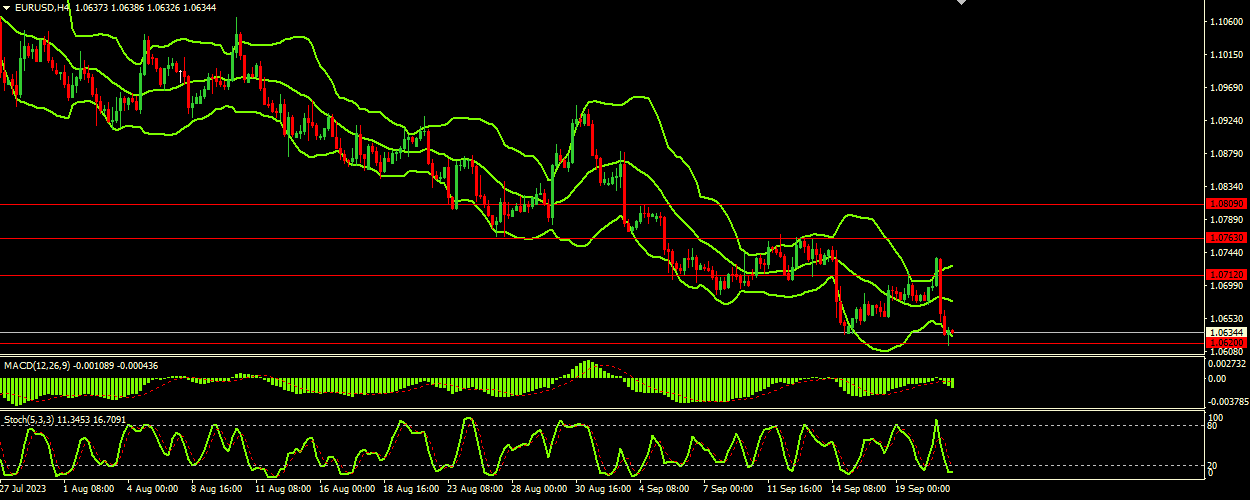Fundamental analysis of EUR/USD
The EUR/USD pair has declined for three consecutive days, trading around 1.06340 on Thursday.
This decline is mainly due to the US Federal Reserve's decision to keep the current benchmark interest rate at 5.5%. A further interest rate hike is expected in 2023, which will put additional downward pressure on EUR/USD. The Federal Open Market Committee hinted at rising inflation expectations. Fed officials revised their interest rate forecast for 2024 from 4.6% to 5.1%, which caused the USD to rise significantly to a six-month high. US 10-year bond yields also hit their highest level since 2007 at 4.43%. Fed Chairman Jerome Powell reaffirmed the Fed's commitment to achieving its long-term inflation target of 2%. Powell pointed to a possible peak in the rate hike cycle, but emphasized that further steps will be determined by macroeconomic data.
On the European side, the European Central Bank (ECB) raised the likelihood that the 14-month period of policy tightening has peaked. The ECB raised the benchmark interest rate to a record high of 4%. Market perceptions of an end to interest rate hikes continue to be supported by downward revisions to GDP and CPI growth forecasts for 2024 and 2025.
On Thursday, the focus will be on data from the US and the eurozone. In the US, data on initial jobless claims, the Philadelphia Fed manufacturing survey and the change in secondary home sales will be released. In the euro zone, we expect preliminary data on consumer confidence and a speech by ECB President Lagarde. The French economy will also attract attention, where a slight improvement in business confidence is expected. Any significant improvement will be a positive indicator for investment and hiring, as private consumption in France accounts for more than half of the country's GDP. Private consumption in the US and France plays a central role in their economies, accounting for over 65% and 50% of GDP respectively. Monetary policy divergence continues to favor the dollar, while persistent labor market conditions and the challenging economic outlook for the eurozone provide support for EUR/USD's decline. However, the dollar could experience difficulties if jobless claims rise.
Technical analysis and scenarios:

If the price falls into the lower range and is near the lower Bollinger Band, it could indicate a possible bounce or continuation of the trend. Widening bands indicate increased volatility. The Stochastic oscillator is approaching oversold territory, which is below the 20 mark. These values indicate that the market is approaching a zone where a price reversal can be expected. The MACD line is below the signal line, which indicates bearish sentiment. Given the current indicators and the EUR/USD downtrend in recent days, the pair may continue its bearish momentum.
Main scenario (SELL)
Recommended entry level: 1.06200.
Take Profit: 1.05700.
Stop Loss: 1.06400.
Alternative scenario (BUY)
Recommended entry level: 1.07120.
Take Profit: 1.07630.
Stop loss: 1.06850.
